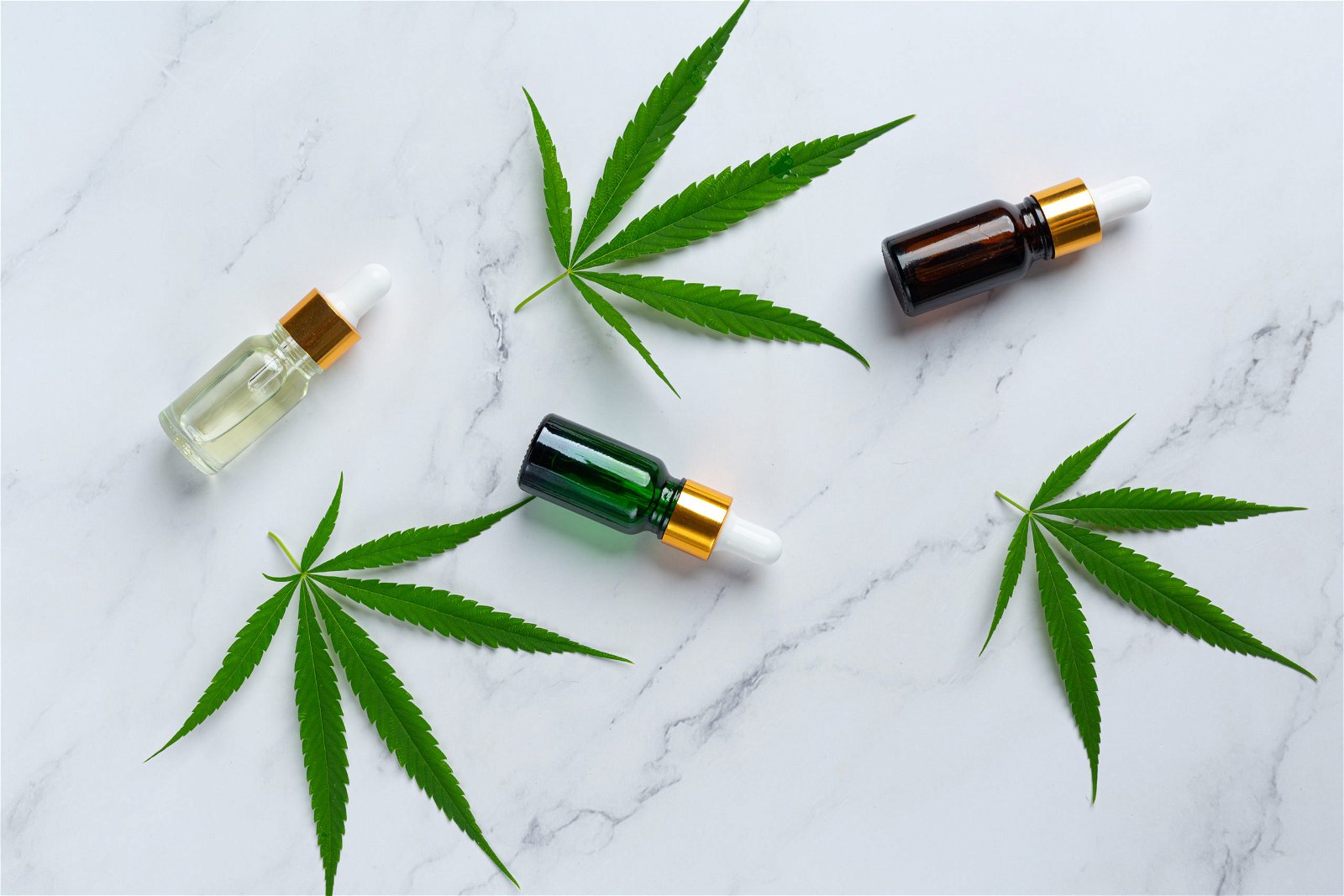Although cannabis contains hundreds of them, all cannabinoids are connected in a sort of family tree, where the most important ones known so far come from a single substance: CBGA.
When CBGA is synthesized by one of four different dehydrogenase enzymes during plant growth, CBDA, THCA, CBCA and CBG are formed. These turn into CBD, THC, CBC, and CBG (which undergoes no change), respectively, after undergoing decarboxylation. Don’t let the latter term confuse you, however. Decarboxylation simply means that they are exposed to heat.
In this article we will try to find out more about CBG, Cannabigerol, a molecule that would be demonstrating an interesting therapeutic potential, of which we have already introduced the first concepts
CBG Discovery and how it works
CBG was discovered for the first time in 1964 by the scientist Y. Gaoni, derives from cannabigerolic acid (CBGa) which is the first cannabinoid produced in the hemp plant, from which in turn through an enzymatic process are formed the three main acids found in the plant: THCA, CBDA and CBCA and from which then through decarboxylation are obtained THC and CBD and CBC.
In our body there are endocannabinoids (particular bioactive lipids) that interact through the endocannabinoid system with CB1 and CB2 receptors, one of these edocannabinoids is anandamide and, it seems that CBG, in particular, increases the production of this specific lipid.
But why is this an important detail?
Because anandamide among other things plays a regulatory action of sleep, appetite and memory, and acts directly on CB1 and CB2 receptors, in particular the latest research seems to confirm that anandamide binds to CB1 receptors, and acts as a block to the proliferation of cells that occurs in the body when there is an aggressive pathology. So if you could get the body to produce more of this endocannabinoid, it could be a great help in fighting some diseases.
CBG and CBD, what are the differences?
CBD and CBG are two completely different cannabinoids contained within cannabis plants, they have very different chemical structures and concentrations.
The main difference between CBD and CBG is this: while research is slowly validating the alleged miraculous properties of CBD in the treatment of certain diseases, not much is yet known about CBG. What is known for sure is that it is not a common cannabinoid and that it is not found in large quantities within the cannabis plant, so a certain amount is needed to test and study it.
Another difference between CBD and CBG is that only traces – 1% or less – of CBG are found in the cannabis plant; but as for the rest, they’re both non-psychoactive, which means they won’t get you high. They are also both natural, have minimal or no side effects and offer a wide range of health benefits.
Although the effects of CBG and CBD when combined have not been studied, we do know that combining different cannabinoids leads to what is called the entourage effect: meaning that the effects of each cannabinoid are enhanced when they are combined. This effect has been well studied in relation to the relationship between CBD and THC: for example, both CBD and THC are more effective at reducing pain when taken together.

CBG Benefits and Research
We must remember that if these scientific researches are promising, it is important to underline that many more are needed and above all clinical studies to fully understand how CBG works in the body and therefore to certify that actually CBG is effective, let’s say we are on the right way.
Cannabigerol seems to be able to have beneficial potential in the following conditions:
Bacterial infections. Recently, in 2020 research revealed the antibacterial efficacy of CBG especially against some very dangerous GRAM-negative bacteria, such as E. Coli. It seems in fact that CBG in combination with polymyxin B (another active ingredient with antibiotic activity) may have enormous potential to fight bacteria more resistant to antibiotics, not only because it fights them effectively, but also because the bacteria do not seem to develop resistance to CBG.
Inflammatory bowel disease. CBG appears to reduce inflammation associated with inflammatory bowel conditions, according to a 2013 study in mice.
Glaucoma. Unlike CBD, which does not seem to be indicated for this disorder, Cannabigerol on the other hand could be effective in alleviating the symptoms of this disease. A study published in 2008 suggests that CBG seems to be effective in the treatment of glaucoma because it reduces intraocular pressure.
Loss of appetite. A 2016 study in rats suggested that CBG’s positive effects include that of an appetite stimulator. Appetite-stimulating chemicals could be used to help those with conditions such as HIV or cancer.
Huntington’s Disease. According to a 2015 study that examined mice with a neurodegenerative disorder called Huntington’s disease, it was found that Cannabigerol appeared to have neuroprotective properties. The study concluded that CBG is a valuable aid in treating other neurodegenerative conditions and generally contribute to better functioning of the nervous system.
Bladder dysfunction. Some cannabinoids appear to affect bladder contractions. A 2015 study looked at how five different cannabinoids affect the bladder, and concluded that CBG holds the most promise in treating bladder dysfunction.
Do you have any question on CBG? Want to buy or test a sample of CBG?
If so feel free to write us an email here!
Although cannabis contains hundreds of them, all cannabinoids are connected in a sort of family tree, where the most important ones known so far come from a single substance: CBGA.
When CBGA is synthesized by one of four different dehydrogenase enzymes during plant growth, CBDA, THCA, CBCA and CBG are formed. These turn into CBD, THC, CBC, and CBG (which undergoes no change), respectively, after undergoing decarboxylation. Don’t let the latter term confuse you, however. Decarboxylation simply means that they are exposed to heat.
In this article we will try to find out more about CBG, Cannabigerol, a molecule that would be demonstrating an interesting therapeutic potential, of which we have already introduced the first concepts.
CBG Discovery and how it works
CBG was discovered for the first time in 1964 by the scientist Y. Gaoni, derives from cannabigerolic acid (CBGa) which is the first cannabinoid produced in the hemp plant, from which in turn through an enzymatic process are formed the three main acids found in the plant: THCA, CBDA and CBCA and from which then through decarboxylation are obtained THC and CBD and CBC.
In our body there are endocannabinoids (particular bioactive lipids) that interact through the endocannabinoid system with CB1 and CB2 receptors, one of these edocannabinoids is anandamide and, it seems that CBG, in particular, increases the production of this specific lipid.
But why is this an important detail?
Because anandamide among other things plays a regulatory action of sleep, appetite and memory, and acts directly on CB1 and CB2 receptors, in particular the latest research seems to confirm that anandamide binds to CB1 receptors, and acts as a block to the proliferation of cells that occurs in the body when there is an aggressive pathology. So if you could get the body to produce more of this endocannabinoid, it could be a great help in fighting some diseases.
CBG and CBD, what are the differences?
CBD and CBG are two completely different cannabinoids contained within cannabis plants, they have very different chemical structures and concentrations.
The main difference between CBD and CBG is this: while research is slowly validating the alleged miraculous properties of CBD in the treatment of certain diseases, not much is yet known about CBG. What is known for sure is that it is not a common cannabinoid and that it is not found in large quantities within the cannabis plant, so a certain amount is needed to test and study it.
Another difference between CBD and CBG is that only traces – 1% or less – of CBG are found in the cannabis plant; but as for the rest, they’re both non-psychoactive, which means they won’t get you high. They are also both natural, have minimal or no side effects and offer a wide range of health benefits.
Although the effects of CBG and CBD when combined have not been studied, we do know that combining different cannabinoids leads to what is called the entourage effect: meaning that the effects of each cannabinoid are enhanced when they are combined. This effect has been well studied in relation to the relationship between CBD and THC: for example, both CBD and THC are more effective at reducing pain when taken together.

CBG Benefits and Research
We must remember that if these scientific researches are promising, it is important to underline that many more are needed and above all clinical studies to fully understand how CBG works in the body and therefore to certify that actually CBG is effective, let’s say we are on the right way.
Cannabigerol seems to be able to have beneficial potential in the following conditions:
Bacterial infections. Recently, in 2020 research revealed the antibacterial efficacy of CBG especially against some very dangerous GRAM-negative bacteria, such as E. Coli. It seems in fact that CBG in combination with polymyxin B (another active ingredient with antibiotic activity) may have enormous potential to fight bacteria more resistant to antibiotics, not only because it fights them effectively, but also because the bacteria do not seem to develop resistance to CBG.
Inflammatory bowel disease. CBG appears to reduce inflammation associated with inflammatory bowel conditions, according to a 2013 study in mice.
Glaucoma. Unlike CBD, which does not seem to be indicated for this disorder, Cannabigerol on the other hand could be effective in alleviating the symptoms of this disease. A study published in 2008 suggests that CBG seems to be effective in the treatment of glaucoma because it reduces intraocular pressure.
Loss of appetite. A 2016 study in rats suggested that CBG’s positive effects include that of an appetite stimulator. Appetite-stimulating chemicals could be used to help those with conditions such as HIV or cancer.
Huntington’s Disease. According to a 2015 study that examined mice with a neurodegenerative disorder called Huntington’s disease, it was found that Cannabigerol appeared to have neuroprotective properties. The study concluded that CBG is a valuable aid in treating other neurodegenerative conditions and generally contribute to better functioning of the nervous system.
Bladder dysfunction. Some cannabinoids appear to affect bladder contractions. A 2015 study looked at how five different cannabinoids affect the bladder, and concluded that CBG holds the most promise in treating bladder dysfunction.
Do you have any question on CBG? Want to buy or test a sample of CBG?
If so feel free to write us an email here!




